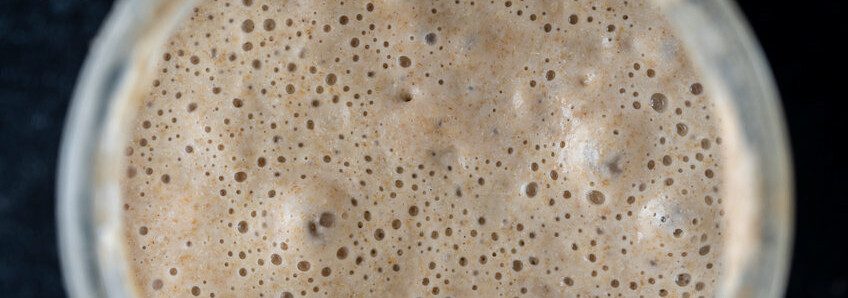
The technology of sourdough starters in baking.
The quality, flavor and ultimate success of your fermented breads begins with sourdough starters, or preferments. Although making a starter is simple enough, there is a complex side to sourdough technology. Sourdough (also known as levain) leavens bakery products as a clean label leavening solution for wheat and rye bread, Panettone, Colomba, Pandoro, different brioches, and other products.
Where did sourdough come from?
The origin of sourdough can be traced back to Egyptian civilization’s mural paintings in 1500 BC. From the 19th century onwards, the usage of sourdough declined with the introduction of baker’s yeast in the market. The fermentation of sourdough forms carbon dioxide gas, alcohol, and organic acids that leavens the bread and produces a unique mixture of flavors. Dough physical properties, such as elasticity and tenacity, vary according to the type of sourdough used.
Fresh sourdough starter preparation uses water and flour for the fermentation. The microorganisms for sourdough fermentation are present in air, water, flour, or added by the baker. The growth of Lactobacilli surges following the decline of undesirable bacteria (Enterobacteria). Lactic acid bacteria are responsible for the sour taste resulting from the formation of lactic acid. The optimum growth conditions for microorganisms are available in this paper.
Are there alternative preferments?
Other preferments include Biga and Poolish. Contrary to sourdough, the Biga formulation developed following the discovery of baker’s yeast. It quickens the production with the consistent flavor and aroma of sourdough. The preferment’s low hydration level strengthens the dough, and longer fermentation results in a desirable flavor mix.
Biga Formulation:
- Bread flour: 100%
- Water: 50–60%
- Fresh yeast: 0.8–1.5% or
- Instant yeast: 0.1%
Find the procedure for preparing Biga here.
Baron Zang developed the procedure for Poolish bread in 1840 in Poland. The bakers shifted to using yeast alone for fermentation compared to the blend of yeast and sourdough. Poolish is a highly fluid yeast-cultured dough that requires an extensive fermentation time and higher hydration than a plastic sponge.
Please find a detailed read for Poolish here.
Classification
Factors to be figured in for a good quality sourdough include preferment acidity, anti-mold, lactic fermentation, synthesis of volatile compounds, proteolysis, and others. Sourdough can be classified based on the applied technique.
- Type 1: Prepared using traditional methods
- Type 2: Utilized as dough souring supplements for bread supplements
- Type 3: Dried preparation with external addition of the baker’s yeast
Need more advice for your sourdough starters and production?
Check out our technical paper that dives into the science of sourdough starters and production tips to optimize your bread. Download here.

